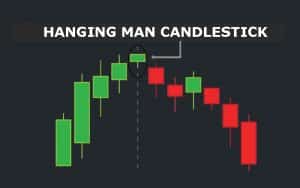The exponential moving average (EMA) is a technical indicator that highlights an asset’s price direction by smoothing out the erratic movements. It defines rather than predicts the trend. Besides, just like the other moving averages, traders use the EMA to identify resistance and support levels. Notably, the indicator places more weight on the recent prices than the previous ones. As such, it is sensitive to price changes.
Example of the EMA
The chart above is the daily copper chart with two EMAs (20-day and 50-day averages). The 20-day EMA, denoted by a blue line, is above the 50-day EMA denoted by a yellow line. The setup indicates that the commodity’s prices are bound to take an upward momentum.
Difference between SMA and EMA
SMA and EMA are the two popular moving averages. The difference between the two indicators is the ability to reflect new data on the trend.
Consider this scenario. The Copper’s closing prices for 5 days are $32.02, $32.08, $ 33.04, $32.09, and $33.01. To calculate the SMA, you will need to add the prices and then divide by the five days, which will be $32.45.
Now let’s assume that data released on day 2 causes the commodity price to dip to $29.90. In that case, the SMA will have reduced to $32.01. The one-day event will distort the trend creating the notion that the asset price is declining.
In comparison, the EMA will give more emphasis to the last three days. As such, the volatility on day two will have a lower impact on the EMA compared to the SMA. An EMA will focus on the current market sentiment and price action rather than investors’ reactions to past events. Its sensitivity to new prices makes it more popular than the SMA.
How to calculate the EMA
The formula for calculating the EMA is:
EMA = closing price * multiplier + previous day’s EMA * (1-multiplier)
To understand the calculation, let’s work with the 25-day EMA.
First, calculate the SMA. It will be the total of the 25 days’ closing prices divided by 25.
Next, calculate the multiplier (used in the weighting of the EMA).
The formula is:
Multiplier =2/(time period + 1)
In this case, it would be 2/(25+1) = 0.0769 or 7.69%.
To get the EMA, the formula is:
Price(t) * k + EMA(y) * (1-k)
Where:
t = today
y = yesterday
k = multiplier
The calculated SMA will be used as EMA(y).
In our example, the EMA would be, (today’s closing price) * 0.0769 + (SMA) * (1-0.0769).
How to interpret the EMA
Among the major functions of the EMA in trading is to identify a trend. If the price of an asset is above the EMA, that’s a bullish sign. Similarly, prices that appear under the EMA are a bearish sign. By highlighting the direction of the security’s price, a trader is able to identify a buy/sell signal. Furthermore, just like other moving averages, the EMA is helpful in defining the support and resistance levels.
Notably, traders often combine EMA with other technical indicators to confirm a trend in the market. Besides, it is possible to include two EMAs on a chart. For instance, traders often use the 20-day average (short-term average) concurrently with the 50-day average (medium-term average). If the 20-day average moves above that of the 50-day, it shows an uptrend. Similarly, if the 20-day EMA crosses the 50-day average to the lower side, that’s an indication that the price is on a downward momentum.



